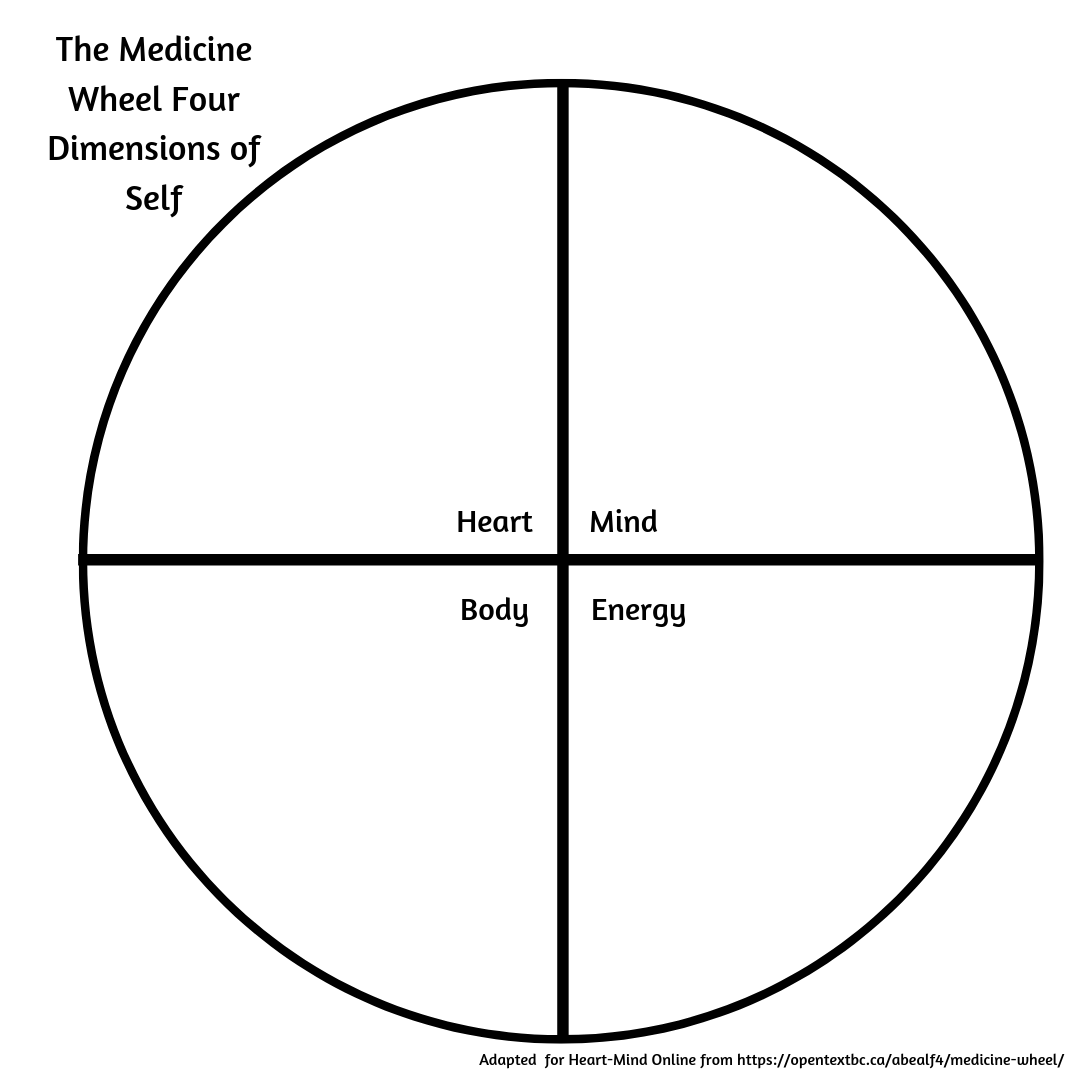
This 3-part series introduces the Indigenous teaching of the medicine wheel. Reflecting on Indigenous voices from across Canada, it proposes three unique ways that teachers and parents can use the medicine wheel to guide the young people in their life towards greater Heart-Mind well-being.
For an intoduction to the medicine wheel, be sure to check out the first part of this series: Lesson 1 - Learning is a Cycle.
Lesson 2 - Well-being is balance
Lesson plan download: Well-being is balance
In this lesson, students are guided by the medicine wheel and the 5 Heart-Mind Qualities to discover how balance plays a role in their own well-being. Then, students set goals for increasing balance and well-being in their lives. In doing so, students strengthen Heart-Mind qualities: Secure & Calm, Gets Along with Others, Alert & Engaged, and Compassionate & Kind.
The medicine wheel is an important metaphor in many Indigenous[2] cultures. It is often represented as a circle divided into four equal parts, like quarters of a pie. Each quarter is a different colour and represents a different direction. There are four directions - east, south, west, north - which symbolize different aspects of well-being.

The four directions of the medicine wheel also represent the four dimensions of self: body, mind, heart, and spirit or energy[3]. The medicine wheel encourages us to find balance between these dimensions in order to foster well-being in our lives.
This lesson plan, which is suitable for grades 4 - 7, explores balance as a core aspect of well-being. Using the medicine wheel to discover balance between the four dimensions of self - body, mind, heart, and energy - this lesson plan teaches the 5 Heart-Mind Qualities and simple practices that support them, such as emotional literacy, active listening, and SMART goal setting.
Sometimes people associate the idea of "spirit" with spirituality and religion. In this resource, we use the term "spirit" to refer to the energy that flows through our bodies, minds, and hearts and keeps us alive. Throughout this resource, we will use the term "energy" instead, as it is neutral and more universal.
The medicine wheel is an important metaphor in many Indigenous cultures. It is often represented as a circle divided into four equal parts, like quarters of a pie. Each quadrant is a different colour and represents different aspects of the whole. All parts are interrelated, as they interact with and depend upon one another.
This description is based on writings of Anishaabe scholar Nicole Bell, MEd., PhD., of the bear clan from Kitigan Zibi First Nation, in the article "Teaching by the Medicine Wheel."
The term "Indigenous" describes a variety of Aboriginal groups. It is used frequently in global and international contexts. Aboriginal peoples are the first inhabitants of Canada, including First Nations, Inuit, and Métis peoples.